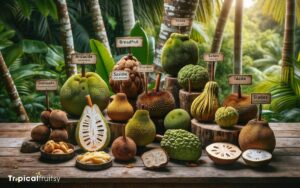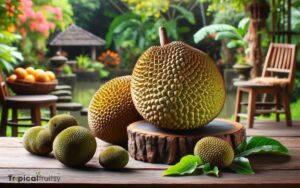Is Breadfruit Native to Hawaii? Explore!
Breadfruit is not native to Hawaii; it originates from New Guinea and the Indo-Malay region. It was introduced to the Hawaiian Islands by Polynesian navigators approximately 1,200 years ago.
Breadfruit, or ‘ulu’ in Hawaiian, was brought to Hawaii by early Polynesian settlers. These settlers were remarkable ocean navigators who transported plants essential for their survival during their voyages, including breadfruit.
Over the centuries, ‘ulu’ has become an integral part of Hawaiian culture and cuisine, though it is not an indigenous species.
Discovering the Polynesian roots of Hawaii’s beloved ‘ulu’ unveils a fascinating tale of ancient voyaging and cultural adaptation.
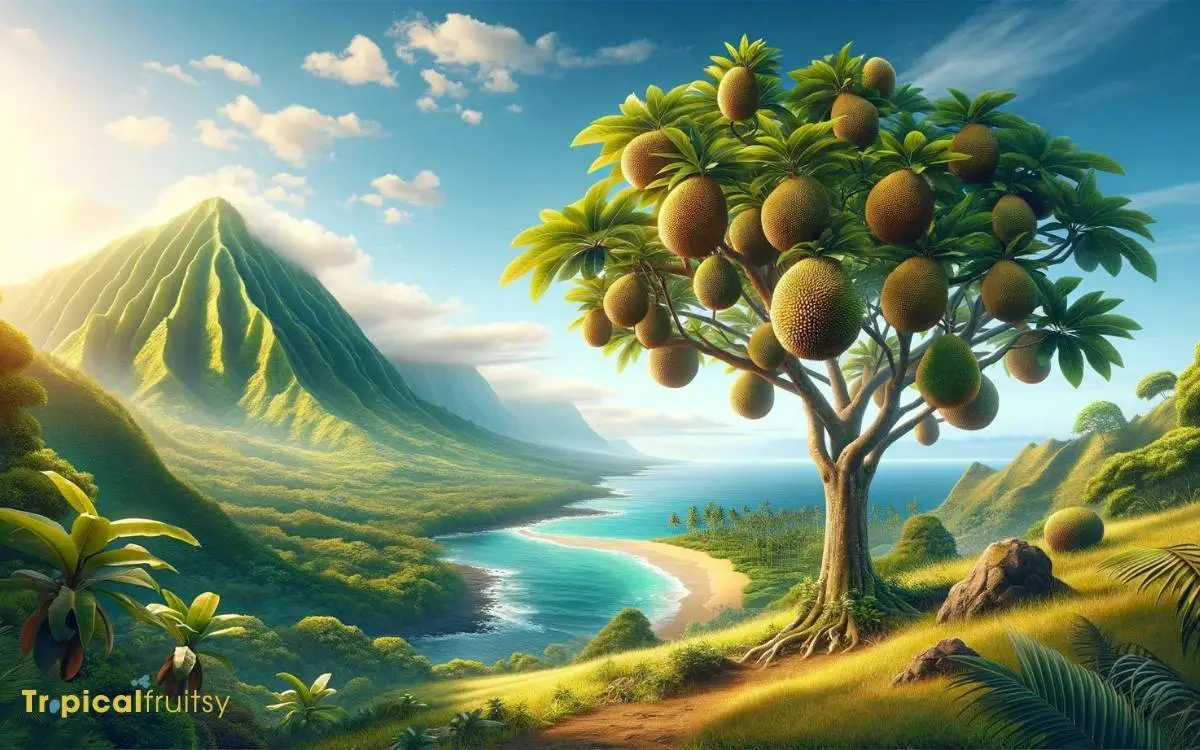
Key Takeaway
6 Attribute: Breadfruit in Hawaii
| Attribute | Detail |
|---|---|
| Scientific Name | Artocarpus altilis |
| Common Name | Breadfruit |
| Native Region | New Guinea, Indo-Malay |
| Introduced to Hawaii | Approximately 1,200 years ago by Polynesians |
| Local Hawaiian Name | ‘Ulu’ |
| Significance in Hawaii | Cultural, agricultural, and ecological importance |
The Origin of Breadfruit
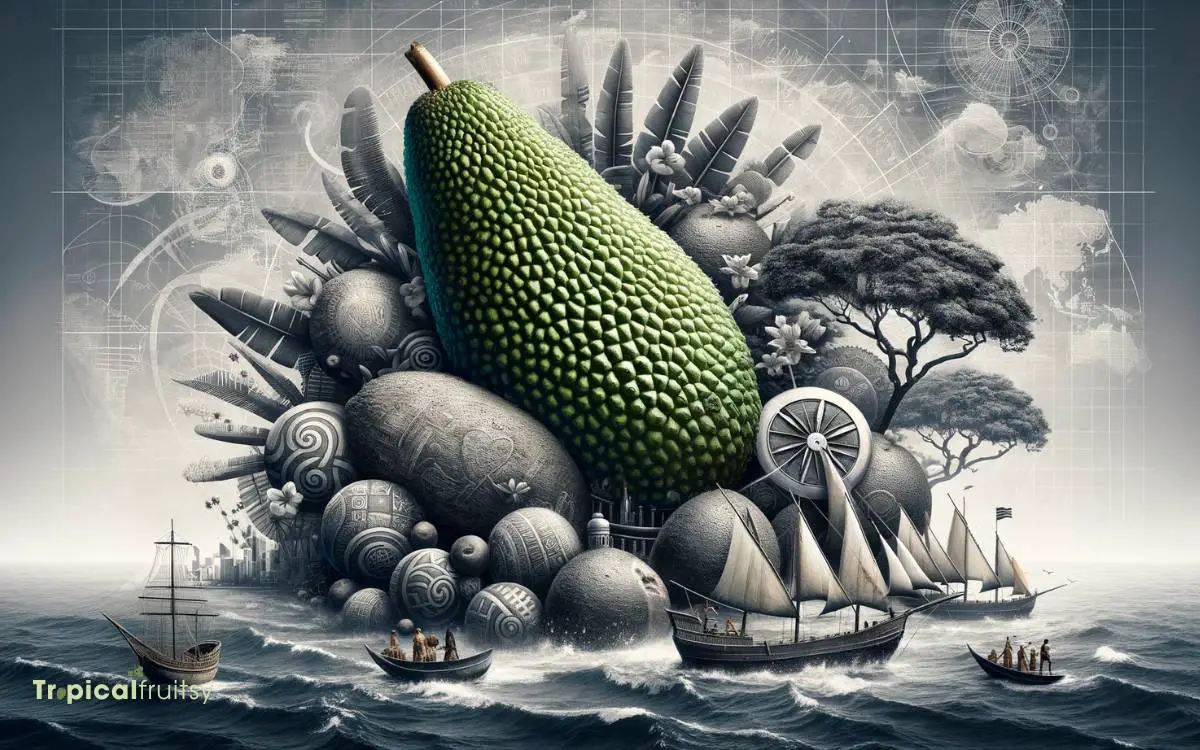
Breadfruit (Artocarpus altilis) originated in the South Pacific and has been spread through the tropical regions by human travelers and migrations over thousands of years.
The species is believed to have been first domesticated in what is now known as Papua New Guinea and the Malay Archipelago, where it has been cultivated for its ability to thrive in a humid, tropical climate and its utility as a food source.
Its introduction to Hawaii, though not native to the archipelago, is a testament to the plant’s importance to Pacific Islanders.
The voyaging canoes that brought the Polynesians to Hawaii included breadfruit among their precious cargo, signifying its integral role in their agricultural and cultural practices.
Breadfruit’s Arrival in Hawaii
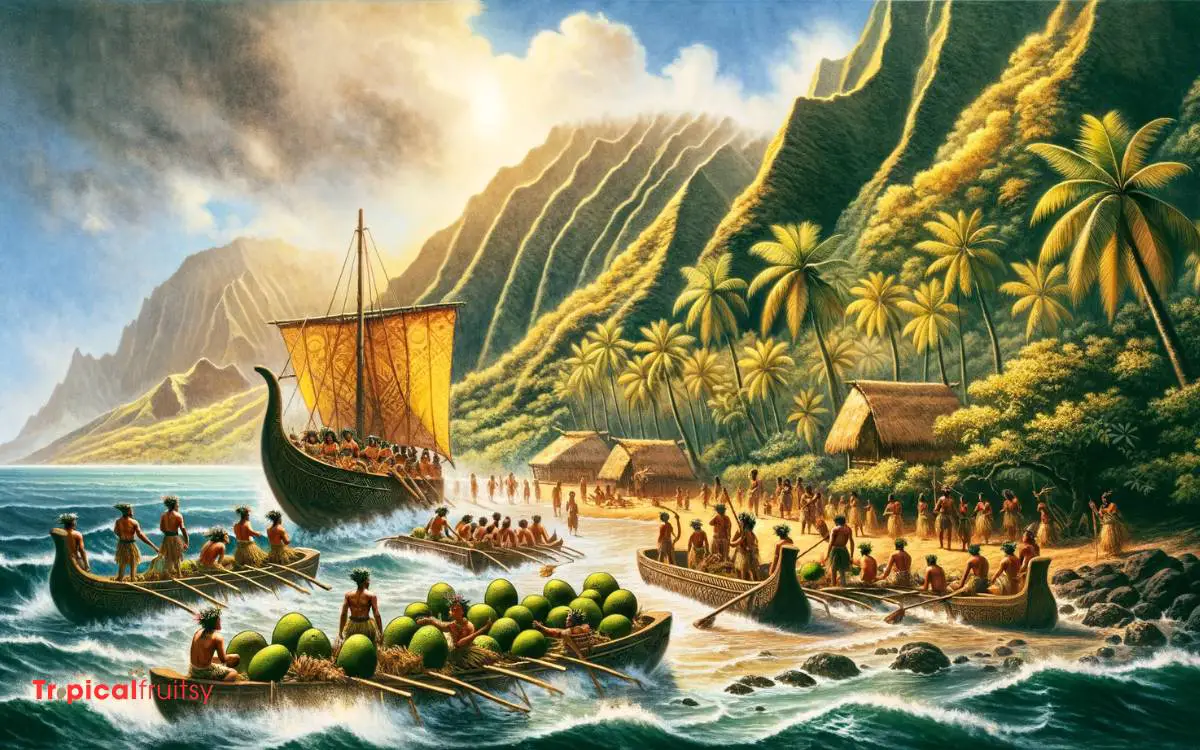
Polynesian navigators introduced breadfruit to the Hawaiian Islands as a staple crop during their oceanic voyages of settlement.
This seminal event was part of the broader migratory patterns of these skilled seafarers, who strategically carried essential plants and animals to ensure sustainable living conditions in their new habitats.
The arrival of breadfruit is thought to have occurred around the first millennium CE, aligning with the period when Polynesians were actively colonizing the vast Pacific islands.
The cultivation of breadfruit in Hawaii reflects a deliberate act of agricultural and ecological adaptation.
Polynesians recognized the plant’s potential for providing high-yield sustenance in the archipelago’s favorable climate.
Consequently, breadfruit became ingrained in the cultural and dietary practices of indigenous Hawaiians, marking its significance beyond mere subsistence.
Cultural Significance in Hawaii
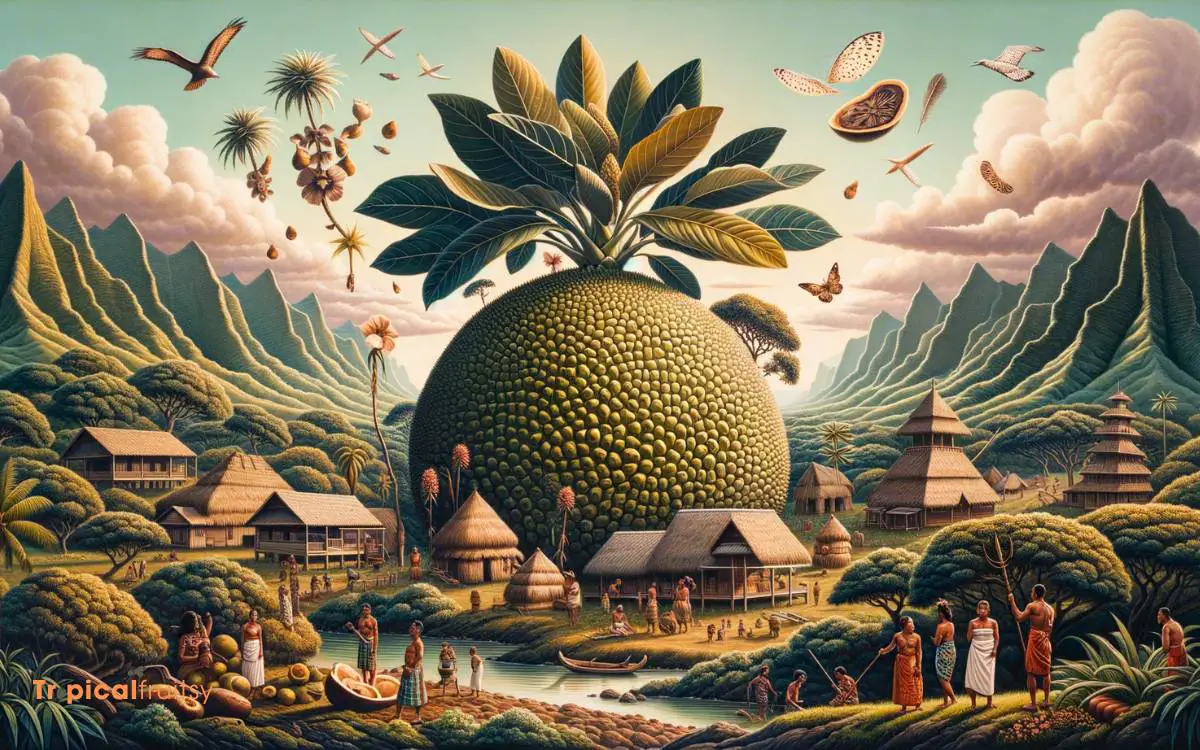
Historically, breadfruit has frequently served as a cultural linchpin in Hawaiian society, symbolizing both sustenance and communal connection.
Integral to the traditional Hawaiian diet, breadfruit, or ’ulu, was more than just a food source; it was a vital component of their spiritual and social fabric.
As a canoe crop, it was among the plants Polynesian voyagers brought to the islands to ensure their survival.
The reverence for ’ulu can be observed in the rich oral traditions and hula chants, where it is often lauded for its life-giving qualities.
Its cultivation and harvest cycles were deeply embedded in the community’s seasonal rituals, reflecting a profound respect for the land and its resources.
This interwoven relationship between ’ulu and the Hawaiian people sets the stage for examining its ecological impact on the islands.
Ecological Impact on the Islands
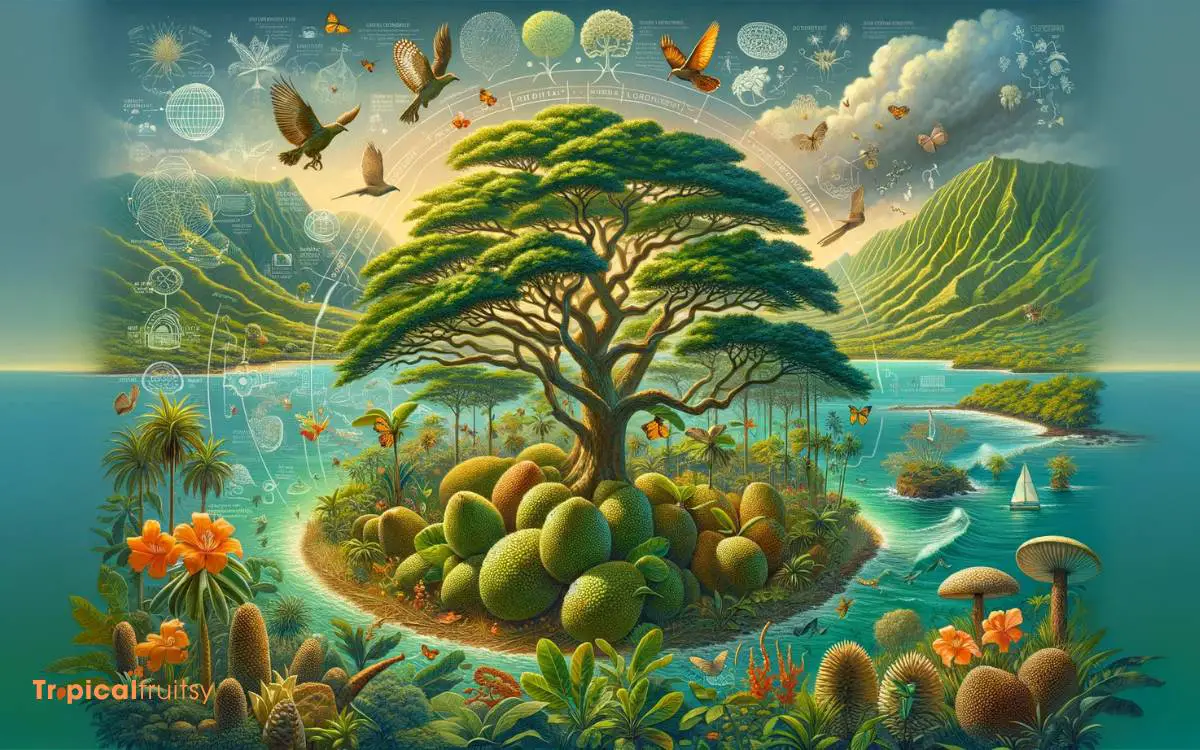
The introduction of breadfruit to the Hawaiian archipelago has had significant ecological ramifications, altering both agricultural practices and local ecosystems.
This versatile tree not only became an integral part of traditional Hawaiian agroforestry but also impacted the islands’ biodiversity.
The ecological implications of introducing breadfruit can be assessed in terms of species interactions, habitat changes, and resource utilization.
| Impact Area | Positive Effects | Negative Effects |
|---|---|---|
| Biodiversity | Supports pollinators; diversifies flora | May outcompete native plant species |
| Soil Health | Improves soil fertility; reduces erosion | Alters soil composition with detritus |
| Agricultural Practices | Enhances food security; promotes sustainable practices | Can disrupt traditional crop rotations |
Where can I Find Breadfruit Trees to Plant in Hawaii?
If you’re looking to buy breadfruit tree online in Hawaii, several local nurseries and garden centers offer them for purchase. You can also consider reaching out to agricultural extension services or botanical gardens for recommendations on where to find breadfruit trees to plant in your area.
Breadfruit in Modern Hawaiian Cuisine

We now turn our attention to the role of breadfruit in contemporary Hawaiian cuisine, where it has become a staple ingredient, featured in a variety of dishes that showcase its versatility.
In modern Hawaiian gastronomy, breadfruit, or ’ulu, is no mere historical footnote; it is actively incorporated into the culinary landscape.
The fruit’s starchy texture allows it to be transformed into an array of forms—boiled, fried, baked, or mashed.
It acts as a substitute for potatoes in traditional recipes, adds substance to stews and soups, and is even utilized in innovative desserts.
Breadfruit’s adoption by contemporary chefs reflects not only a nod to tradition but also a commitment to sustainable, locally sourced food practices, which are particularly resonant in Hawaii’s island economy.
Conclusion
The juxtaposition of breadfruit’s non-native origins with its profound integration into Hawaiian culture and ecosystems highlights a narrative of adaptation and significance.
Though it traversed vast oceans to reach the archipelago, breadfruit has become inextricably linked with Hawaii’s ecological harmony and culinary tradition.
This emblematic fruit stands as a testament to the dynamic interplay of nature and culture, underscoring the rich tapestry of influences that define the Hawaiian Islands.



